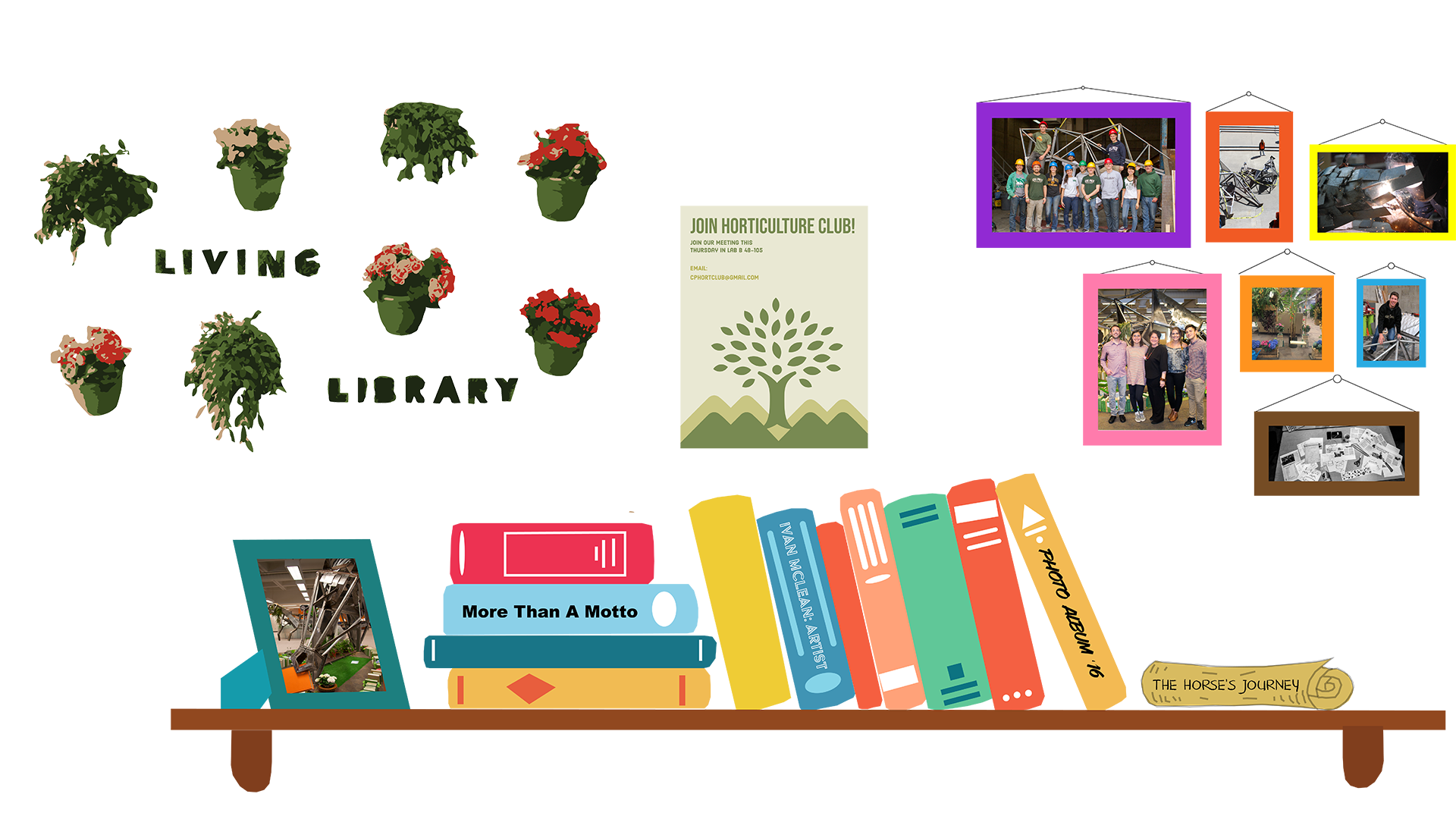Living Library
Interact with the image below to explore the Living Library.

More Than a Motto
The Living Library project served as a case study for the campus publication “More Than a Motto.” The book was created by Brian Greenwood and Dawn Janke during their time with the Center for Teaching, Learning & Technology (CTLT) from 2011-13. During their time with the CTLT, Greenwood and Janke came in contact with many faculty members interested in enhancing their teaching and increasing Learn by Doing opportunities in their courses. They realized the need for a book to highlight and help promote Learn by Doing for current and prospective students as well as parents, alumni, donors and industry partners.
Read it here.
Horticulture Club Flyer
Horticulture Club at Cal Poly is one of three Horticulture and Crop Science department clubs. It is the third oldest club on campus with around 20 active members. Students of all majors are welcome to join us in the fun. Horticulture Club promotes the love of plants to its members and provides contact between students and industry companies. Events the club puts on includes industry meetings, creating bonsai, work and craft days, and an annual department banquet. Conventions that the club participates in consist of the NorCal Tradeshow in San Mateo and Cal Poly’s Pre-Collegiate Symposium held here on campus. Many of the members also participate in volunteering for the FFA State Finals and Open House.
If you are interested in joining, contact the club via email at cphortclub@gmail.com for more information.
The Horticulture and Crop Science is the department for the Agricultural and Environmental Plant Science major (AEPS) here at Cal Poly. Concentrations for the major include Crop and Fruit Science, Plant Protection, and Horticulture. The major offers students an array of opportunities that will better prepare them for the industry. The department provides enterprises for poinsettias, tomatoes, Easter lilies, and many more crops. They also work an organic farm, a hydroponic greenhouse, and host seasonal u-picks out by the Crops Unit. Students are also given the opportunity to work at the Crop and Horticulture units as student assistants. With all the opportunities given to these students to get involved and prepare themselves for the industry, AEPS truly embraces Cal Poly’s “learn by doing” tradition.
Living Wall
The living wall was designed around three main concepts: Sustainability, community, and beauty. Recycled and repurposed industrial material composed from pallets makes up the frame while plants soften and give life to the display. The student designers invited the community to interact with the wall as a way to make fresh produce and plants grown on campus available for people to enjoy. We often forget to look around and savor the natural world we live in. By inviting nature and sustainability into our living and studying space we are reminded that the world is beautiful and worth protecting.
Sara Do (AEPS ‘17)
Jackie J. Wang (AEPS ‘16)
Kristen Cotter (AEPS ‘17)
Matt Ritter, PhD, Faculty Advisor
Re-envisioned from the April 2016 onsite exhibition at Cal Poly’s Robert E. Kennedy Library, this digital retelling draws from the student-developed components that were installed on the library’s second floor for an exhibit entitled “Living Library,” which explored how Cal Poly works toward sustainability and resilience⸺using horticulture, art and engineering to bring the outside inside.
The exhibit’s centerpiece was a unique sculptural interpretation of the iconic Cal Poly Mustang made of 100% reclaimed materials. Nationally acclaimed artist and Cal Poly alumnus Ivan McLean collaborated with an interdisciplinary team of Architectural Engineering students led by Professor Craig Baltimore to design and build the reclaimed mustang. The students titled their project “The Built EnvIRONment” as a nod to the materials used to construct the sculpture. It was coupled by a living wall designed by Horticulture students and crafted around three main concepts: Sustainability, community, and beauty.
Faculty Scholar: Craig Baltimore, PhD, SE, CAED Architectural Engineering
